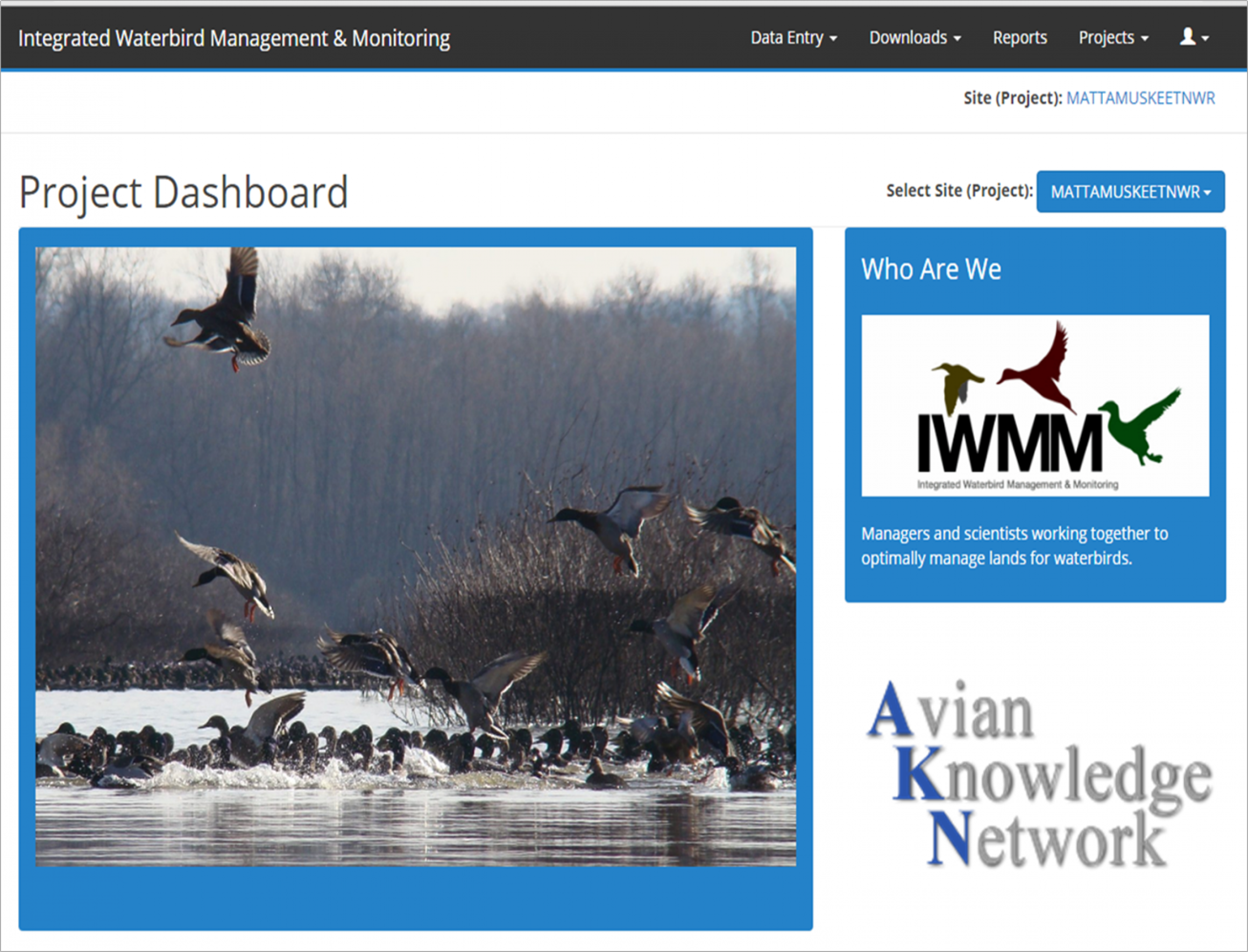Integrated Waterbird Management and Monitoring
Waterbirds that migrate long distances between wintering and breeding destinations present a complex challenge to wetland managers.
These birds use a wide range of sites during their annual cycle. Therefore managers must carefully consider a number of questions: Which species should a manager focus on at a specific site? How does this change throughout the year? How important is a single site in the big picture? And how can managers coordinate their actions across the landscape and optimize their wetland management so that waterbirds have the right amount and quality of habitat, at the right time, in the right places?
To help answer such questions, managers and scientists have worked together to develop Integrated Waterbird Management and Monitoring, or IWMM. This landscape-scale program focuses on three guilds of waterbirds during migration and winter: waterfowl, shorebirds, and wading birds, and links management actions to monitoring.
These three guilds and the focus on the non-breeding period were chosen for several important reasons. For decades, migration stopovers and winter habitats for waterbirds, especially waterfowl, have been the target of intense management efforts by federal and state agencies, tribes, non-government organizations, and private landowners seeking to achieve a variety of conservation interests.
However, while many waterbirds are intensely monitored during the breeding season, no standard protocol existed for monitoring waterbirds and their habitats during the nonbreeding season. Moreover, monitoring and management decisions have largely been disparate and not always aligned to the multi-scale nature of management questions. Finally, although a great deal of information has been collected for waterbirds, this data is often managed separately and frequently underutilized.
IWMM tackles these problems through a multi-scaled, partnership approach that integrates monitoring, modeling, data management, and decision support. One key element of the program is the IWMM monitoring protocol, which has been approved as a national protocol framework by the U.S. Fish and Wildlife Service, and is available to anyone monitoring and managing waterbirds. To date, this is the only protocol to monitor waterbirds during the non-breeding period while concurrently tracking habitat conditions and management actions.
The IWMM protocol captures information that allows managers not only to better understand waterbird/habitat interactions, but also to adjust their actions as they learn more about waterbird responses to management, and/or address emerging threats.
The Partnership
During IWMM’s pilot phase (2012-2015), federal, state, NGO, and private landowners collected data from hundreds of wetlands and entered it into a distributed Access database. However, this approach was limited and the project needed a data management system to provide a common platform for different organizations to securely store, share, and access data and technology.
To that end, IWMM partnered with the Avian Knowledge Network (AKN), and with the help of Point Blue Conservation Science, built the IWMM-AKN data management and decision support system.
The IWMM-AKN portal allows partners access to a system designed to accept and aggregate IWMM data at various scales, and inform local habitat management decisions for waterbirds. Users can set up projects and manage wetland units, store data for analyses, set data sharing levels, and use a suite of tools that help managers understand factors affecting waterbird abundance and habitat use.
Users can also generate reports to provide summary tables and graphs for bird surveys, unit conditions, and vegetation assessments. These include estimates for bird use days, seed production indices, and migration curves. Such reports provide information about carrying capacity and productivity of units, and their timing of use by different waterbird species – essential information for managers trying to optimize their units for waterbird use.
By partnering with the AKN, IWMM has increased our collective capacity to benefit waterbird conservation. Moving to a centralized, web-accessible platform has reduced data entry errors, provided increased data accessibility, linked management actions with bird and habitat responses, and delivered timely, user-generated reports.
This partnership supports the broader waterbird conservation community and brings improved awareness, purpose, access to, and use of data and tools at various spatial scales.
To find out more, visit the IWMM Project site and the Avian Knowledge Network.
Submitted by John Alexander, on behalf of the IWMM Partnership

